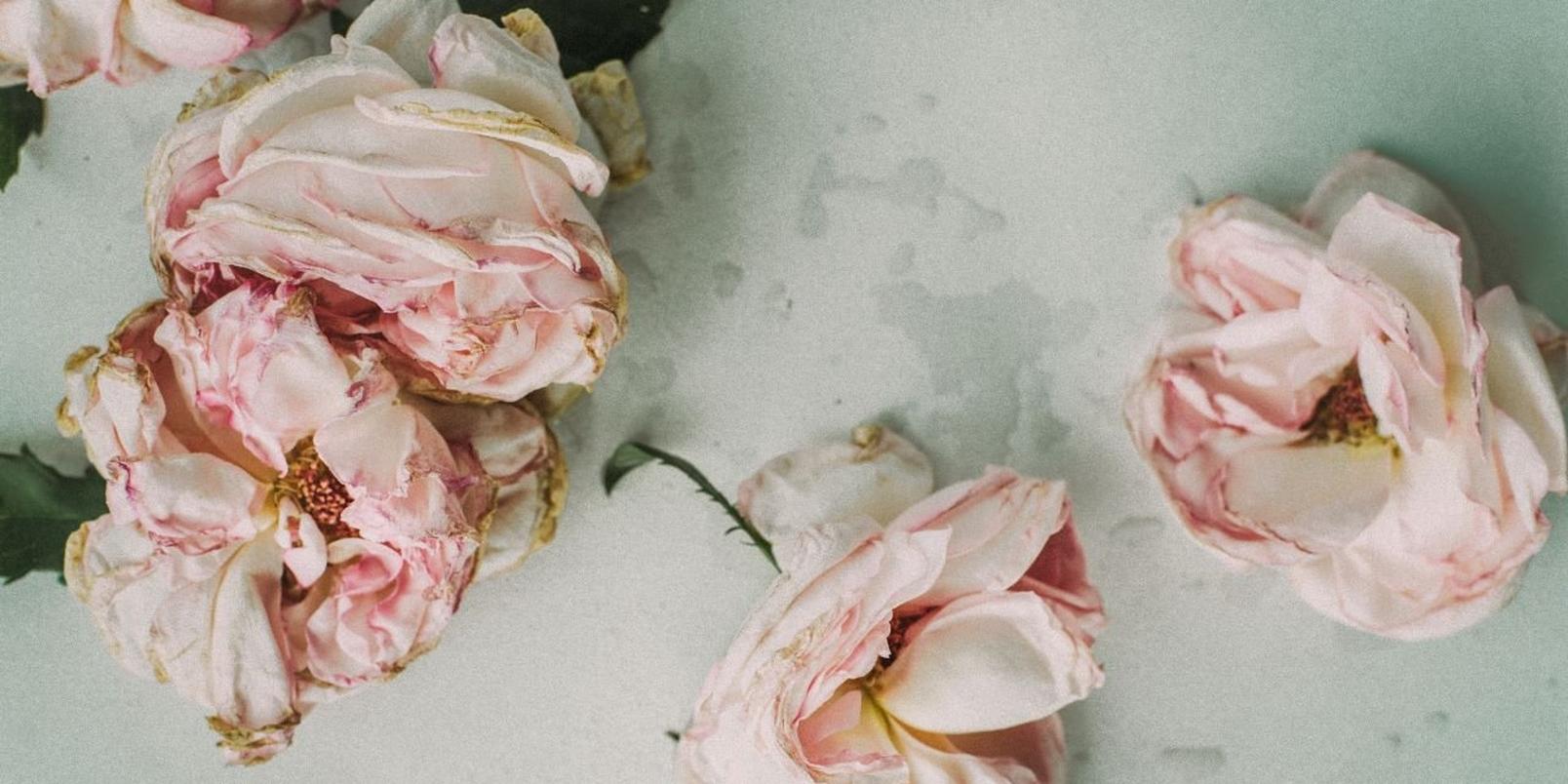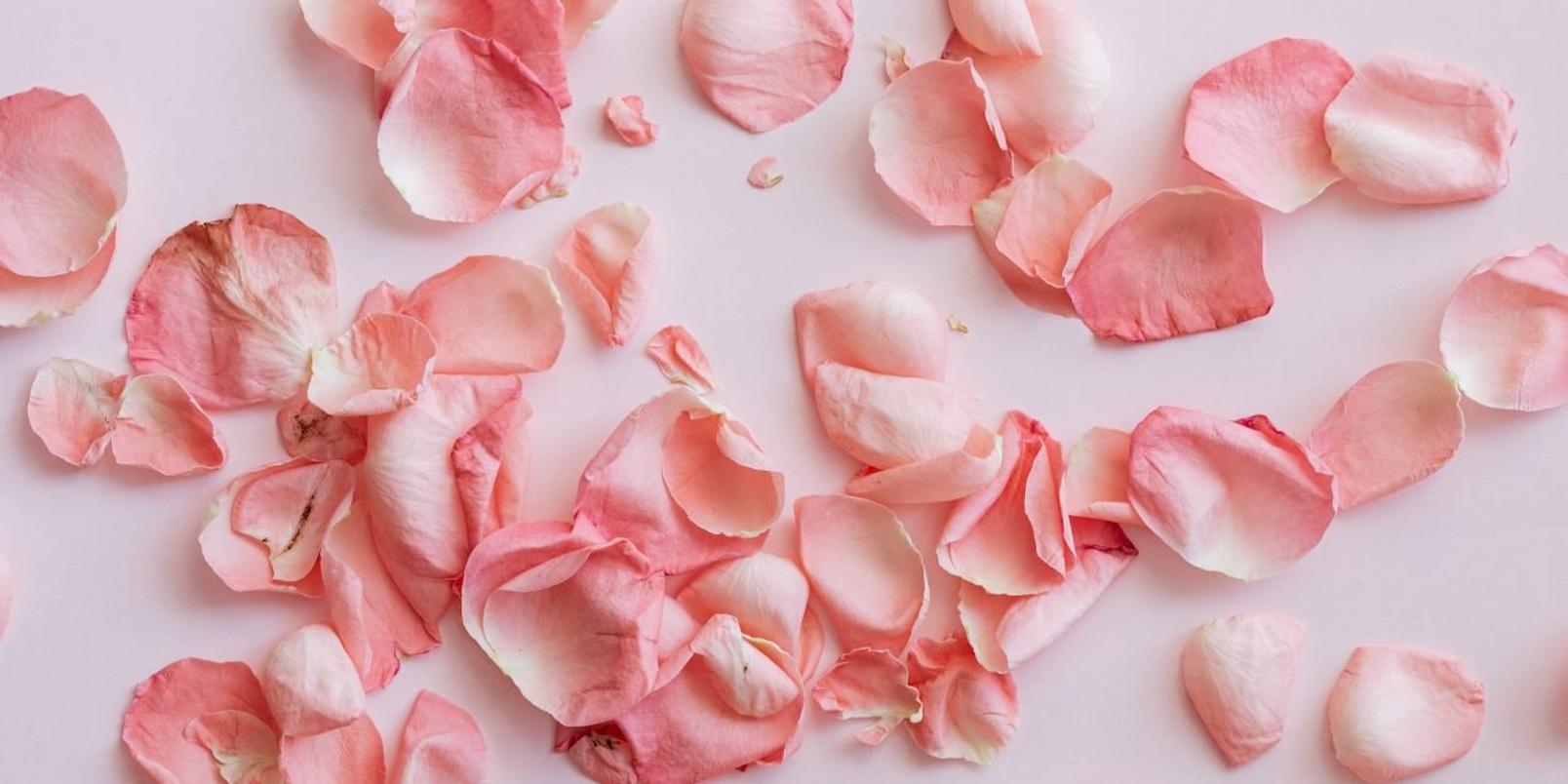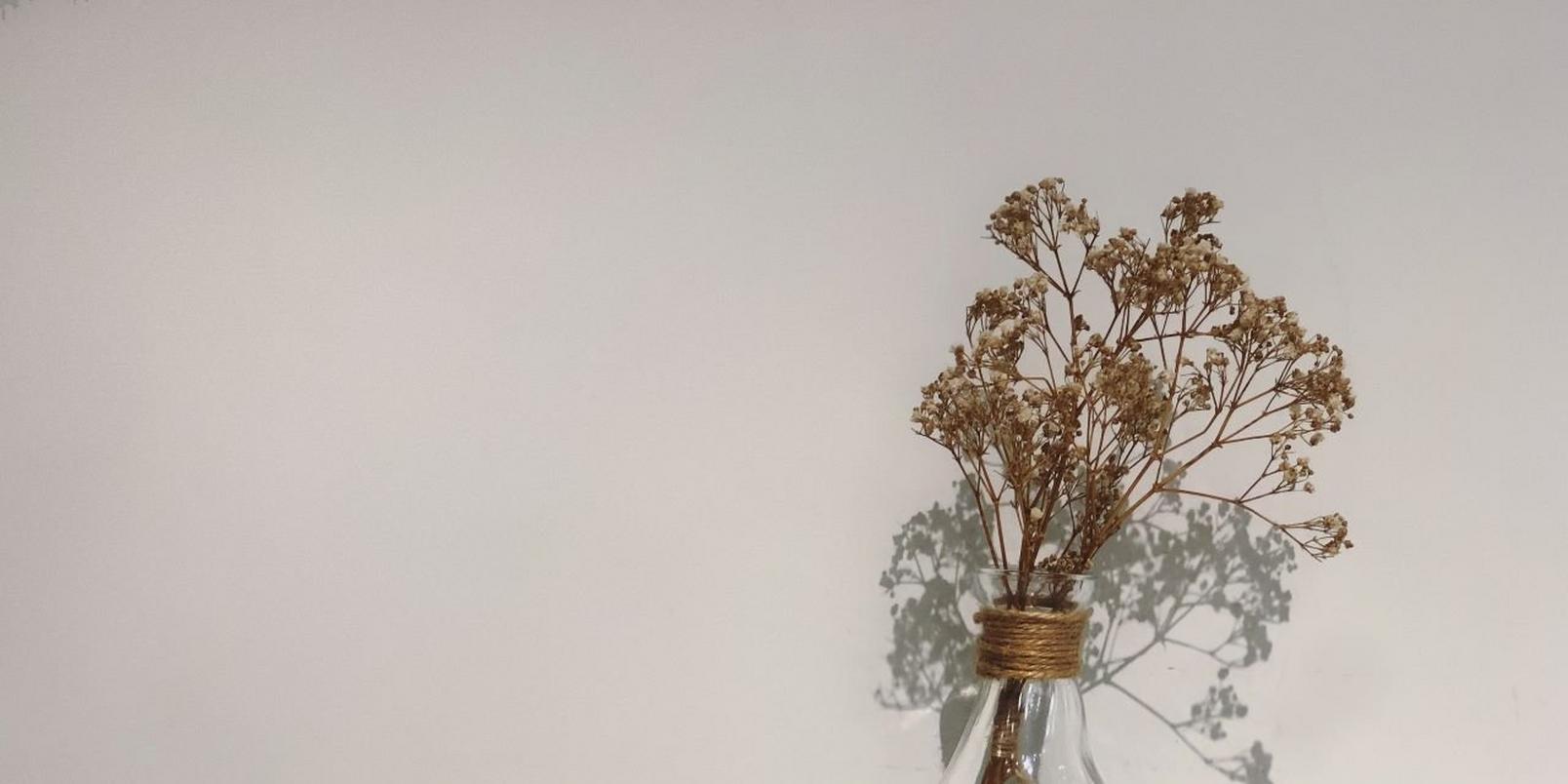How to dry flowers

Flowers can sometimes say it all and transport you back to special days and occasions. Whether you want to hold onto the joy of your wedding day – and have those impressive peonies around for a little while longer – or keep a sentimental bloom close from a milestone birthday, we have the solution!
It's so easy to dry flowers in your home. You don't need any fancy tools, just a pinch of patience and a little love and care. Your dried flowers can be carefully placed between the sheets in a prized photo album or featured in a vase on your coffee table to enjoy every day.
Want to learn how to dry flowers? We have everything you need to know right here.
How to dry flowers
There are three main ways to dry out those floral beauties. These include:
- Air drying – Leaving the flowers to dry out naturally.
- Desiccant drying – Using silica gel to speed up the process.
- Microwave drying – Blasting them in this kitchen device to get your flowers to dry fast!
The method you choose depends on the type of flower you want to preserve. We've broken each one down below to help you get to grips with the process.
How to air dry flowers
The air drying method is best if you have plenty of time on your hands and are looking for an eco-friendly way to preserve your precious blooms.
It's an age-old method, used by those who dried out herbs and plants for medicinal purposes over the centuries. Here's how to do it at home.
You will need:
- Flowers
- Elastic bands
- A coat hanger or a clothes horse and pegs
- A cool, dark space to dry the flowers
- Hairspray
Follow these steps:
Step 1 - Remove any foliage from the stems of your flowers.
Step 2 - Group flowers of the same type together in bunches of five or six.
Step 3 - Tie these bunches together at the bottom of the stems, with an elastic band.
Step 4 - Hang your flowers from hooks or on a coat hanger or clothes horse secured with a peg.
Step 5 - Pop your flowers in a cool place, such as a dark cupboard or a room you don't use often.
Step 6 - Wait two to three weeks but check how your flowers are getting on regularly. If they don't seem to be drying, move them to a different spot.
Step 7 - You'll know your flowers are ready as the petals will rustle when touched! When you feel that they're dry enough, carefully remove them from their hanging spot.
Step 8 - Finally, preserve your air dried flowers with a spritz of hairspray! Then, enjoy the final result displayed in your home.
Top tip! You could dry a whole bouquet using this method, just secure the stems at the bottom with a large elastic band then hang it upside down! It may take a little longer, as the flowers are grouped together but it'll be worth it.
How to dry flowers using the desiccant method
You know those little sachets you find in new shoe boxes and coat pockets? Well, the silica gel they hold has many uses and one is drying flowers!
This gel consists of small silica beads that love to soak up moisture, making them ideal for flower drying. The desiccant method speeds up the drying process, so you could have dried flowers in three to five days instead of weeks.
However, we're not going to recommend you save up all those tiny packets – or you'd be there forever! Instead, here are some steps to follow to dry your flowers using silica gel:
You will need:
- Flowers
- An airtight container that your flowers are able to lie flat in – a rectangular, 30cm long container should do the trick for standard blooms, such as carnations or roses. You may need to find a larger one for sunflowers and peonies.
- Silica gel - you can buy this from the likes of Amazon in large bags
- A cup or jug
- A soft cleaning brush
Follow these steps:
Step 1 - Take your container and fill the base of this with your silica gel. Be careful not to get any on your hands, as it can dry out your skin or cause irritation if left for a long period. Leave a cupful for later.
Step 2 - Place your flowers in the container on top of the gel, try to keep them separated.
Step 3 - Take your leftover cup of silica gel and gently dust the flower heads with this, but don't cover them completely.
Step 4 - Place the lid on top and leave your flowers to dry out of direct sunlight.
Step 5 - After three to five days, check on your flowers. If you're happy, take them out then give them a dust with your soft cleaning brush. You could even use a makeup brush that's on its last legs that you no longer need!
Be sure to remove all the silica gel before arranging or using your blooms and cherishing them for years to come!
How to dry out flowers using your microwave
While you might think of your microwave as a device best reserved for heating last night's takeaway pizza or that mug of tea you forgot about, it can also be used to dry out flowers!
With some silica gel to hand and a microwaveable dish, you'll have dried out blooms that you can enjoy in no time. In fact, follow these instructions for dry flowers in 10 minutes! That's just enough time to make a round of tea for your household while you wait.
You will need:
- A microwave
- Flowers
- A microwavable dish - ensure it's large enough for your flowers.
- Silica gel or fresh cat litter (very glamorous!)
- 2 cups - one filled with water the other to use for scooping
Follow these steps:
Step 1 - Fill the base of your microwaveable dish with your silica gel or cat litter.
Step 2 - Place your flowers in the dish. Be sure to put the same type of flower in together because each bloom will dry at different rates and you don't want to risk burning any!
Step 3 - Use one of your cups to cover the stems and flower heads with more silica gel.
Step 4 - Place your dish in the microwave, as well as your cup of water. This balances out the drying process and ensures the flowers don't cook!
Step 5 - There's no set time when it comes to microwaving the flowers, as all devices differ but we recommend you take it slowly. Set the timer for just 10 to 20 seconds at a time and repeatedly check on the flowers.
Step 6 - Once you're happy with how dry they are, remove the dish and leave everything to cool. This can take up to 24 hours as silica gel can get very hot. Then remove the flowers, dust the silica gel off and enjoy!
Did you know? You can also make pressed flowers in the microwave!
Simply take the flower heads you wish to dry and place these between a piece of kitchen towel. Pop this in the microwave then put a glass of water on top.
Again, microwave your flowers in short bursts of time and be careful as the glass can get very hot!
If you need to press lots of flowers, consider investing in a microwave flower press that's specially made for this job.

Which flowers are the best for drying out?
When it comes to drying out flowers, this can only be done with certain blooms and the method you use also depends on the flower. Flowers that have a high water content can't be dried – lilies, for example.
Before you get started, take a look at our quick roundup below of the best flowers for drying and which method works best.
Aster Want to feature asters in your home all year round? No problem! Use the desiccant method to dry out these flowers.
Carnations These pretty blooms can be dried and then enjoyed in tall vases around the home. Use the air drying, desiccant or microwave method.
Chrysanthemums These lush and colourful flowers look striking when dried. They can also be added to tea to infuse it with flavour, which is also said to lower blood pressure and help with headaches. Air drying, silica gel and the microwave method can all be used on this flower.
Eryngium These hardy thistle-like flowers may seem pretty dry already but you can preserve them further using all three drying methods. Once dried they're the perfect classy Christmas decoration.
Gerbera daisies Enjoy these happy blooms long after you first received them! You can air dry them, use silica gel or pop them in the microwave!
Gypsophila Baby's breath looks lovely dried out in a vase on the mantlepiece. Again, all three drying methods work well with these flowers.
Lavender Cuttings of lavender look oh so lovely and hold their scent too, ideal for featuring on bedside tables to help you sleep. Any of the techniques above work with lavender.
Peonies These blooms can be preserved using all three methods, however, because of the flower's oversized head, we recommend that when air drying you hang each flower individually and not in bunches.
Poppies The papery petals of poppies look even more beautiful when dried or pressed. Avoid the microwave method and air drying these blooms, instead, pop them in some silica gel to dry out.
Roses Hold on to those precious memories from anniversaries or dates and dry out your roses to press into photo albums or feature behind glass in frames. Air drying and desiccant drying is best for these popular blooms.
Sunflowers Keep that ray of sunshine in your vase for longer and preserve your sunflower for months to come. Take a look at our full guide to sunflowers here with details on how to dry them. Air dry, leave them in silica gel or microwave them to dry them out.
Tulips Hold onto a slice of spring with a dried bunch of tulips. Desiccant drying and the microwave method are best for these flowers.

Uses for dried flowers
- Confetti - Dried flower petals are a great, eco-friendly alternative to your usual wedding confetti.
- Smudging - Remove bad vibes by creating your own smudge stick with dried sage, lavender, rose petals and rosemary. Light this and let the smoke clear your home of negativity.
- To help you sleep - Dried lavender can be popped on your bedside table and its gentle scent will relax you as you try to drop off to sleep.
- Potpourri - Crumble your dried flowers to release their scent and feature them in a dish in your living room. Add essential oils to give their smell a boost.
- Crafts - Add dried flowers to homemade bath bombs, soaps and candles.
- Decoration - A bunch of preserved flowers make for a permanently pretty decorative feature in your home.
- To preserve memories - Feature your dried wedding flowers in your photo album to enjoy a little piece of the day, long after.

Care tips for dried flowers
You've put in all that effort so let's make sure your dried flowers continue to look their best! Here's how to ensure they stay crisp and pretty.
- Don't put them in direct sunlight - This will lead to the flower heads fading faster than usual. Cling onto that colour by placing your dried flowers in a cool room out of direct sunlight.
- Keep them dry - It goes without saying but if your flowers get wet, it could spoil the effect. Ensure your flowers are kept away from water – that means they can't be in the bathroom – to enjoy them for longer.
- Dust them regularly - Dust can quickly build up on dried flowers, so use a soft feather duster or spray compressed air on them to remove this.
- Feature them somewhere where they won't be moved - Dried flowers are delicate, so the dining table may not be the best place for them, where they'll be moved regularly. Pop them somewhere out of the way where they won't get knocked or brushed against but so you can still enjoy looking at them.
How long do dried flowers last?
This does depend on the type of flower but you can expect to enjoy your preserved blooms for at least one to three years!
Ready to make that bouquet or special gift of flowers last? Follow these steps and enjoy your favourite blooms for longer.
